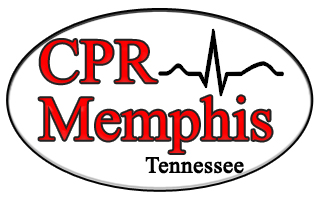UNKNOWN LAB REPORT
Unknown Number 115
Nongnuch Kuligowski
Microbiology: BIO203
Spring/2013
04/30/2013
Introduction
The process of identifying bacteria is like solving a mystery; all requiring is to identify the clues. Each clue will offer possibility to solve the puzzle. Bacteria were among the first life forms on Earth and are present all around from the bottom of the ocean to inside the human body. Bacteria come in all shapes and sizes. Although only a few micrometers in length, bacteria can still be examined through the use of a simple light microscope. The varying characteristics of bacteria play a crucial function in their identification (Hogan, 2010).
There are multiple laboratory techniques such as streak isolation, Gram staining, Catalase, or Simmon’s Citrate that can be used to identify a bacteria. For example, Gram staining determines the composition of the cell wall to figure out whether it is Gram positive or Gram negative. Tests such as Mannitol Salt Agar (MSA) and Eosin Methylene Blue (EMB) will indicate a particular condition a bacteria will favor based on the presence of or lack of a color change. Many other tests can be performed and throughout the process each test will produce a result which will lead to the discover of the bacteria type.
The goal of this report is to identify two unknown bacteria using a series of tests while eliminating unlikely choices. One test tube has been provided with a mixture a Gram positive and a Gram negative bacteria. A list of ten possible bacteria was provided and two need to be identified.
Materials and Methods:
Streak isolation on a nutrient plate agar was performed to separate a mixture of bacteria to pure culture. The nutrient agar was then incubated at 37°C for 48 hours. The isolation plate was observed and recorded. The plates showed two colonies with distinguishing colors; a white-colored colony and an orange-colored colony. Each colony was carefully transferred to a nutrient plate agar and then incubated at 37 °C for 48 hours to promote the growth of the pure culture. A Gram stain procedure was then performed. The white colony was identified as gram-positive (+) staphylococci, due to its morphology. The stain also provided the elimination of Gram (+) Bacillus cereus and Bacillus subititus, because these bacteria would exhibit rod shapes.
The orange colony was Gram stained, observed, and recorded. Under the light microscope the colony appeared to be pink and purple in color, meaning the culture was still mixed. Since the Gram (+) bacteria had been isolated, McConkey Agar (MAC) and Eosin Methylene Blue (EMB) tests were selected in order to isolate the Gram (-) bacteria. The MAC and EMB are selective media because they inhibit the growth of gram (+) bacteria. The plates were incubated at 37°C for 48 hours, and Gram stain procedure with observation under the light microscope was performed. The bacteria strain was Gram-negative (-) with rod shape. Since the isolation of a pure bacteria colony was accomplished, a series of tests were performed in order to identify the bacteria.
For a Gram (+) bacteria, Mannitol Salt Agar (MSA) test was performed. The MSA is a selective and differential media, which favors only certain type of bacteria to thrive due to its high salt concentration. The isolated Gram (+) bacteria were pulled and streaked on an MSA plate with an inoculating loop. The plate was then incubated at 37 °C and results were observed and recorded. If there is a significant color change from pink to yellow, it is positive for MSA, whereas no color change is negative.
The next test for gram (+) bacteria was Catalase. The test is used to detect the present of catalase, which helps to break down toxic hydrogen peroxide to water and oxygen. To determine the presence of catalase, drops of hydrogen peroxide were placed onto a clean microscope slide, and Gram (+) bacteria were transferred to the hydrogen peroxide puddle using a wood stick. If gas bubbles appear, the culture is catalase positive. However, if no bubble is present, the culture is negative for catalase and result was recorded.
Blood agar test was also tested for Gram (+) bacteria. The agar is a differential test medium that distinguishes bacteria based on their ability to lyse red blood cells. The result can be alpha, beta, or gamma hemolysis. The bacteria that are able to completely lyse RBC will show visible clearing of the agar and is positive for beta hemolysis. The bacterium that produces greenish discoloration of the medium around the streak indicates alpha hemolysis. If there is no visible change in the medium, it is negative or gamma hemolysis. The bacterium in question was tested for beta hemolysis. The bacterium from the pure culture was pulled and streaked with an inoculating loop on the blood agar, then the plate was left in the incubator at 37 °C for 48 hours. The result was observed and recorded.
Spirit Blue Agar was the final test for Gram (+) bacteria. The Spirit Blue test is a differential test based on bacteria’s ability to hydrolyze triglycerides through the release of the extracellular enzyme lipase. If there is a visible clearing around bacteria growth indicating a positive result. No visible appearance is otherwise a negative result. The isolated gram (+) was streaked on the plate and incubated at 37°C for 48 hours. The result was observed and recorded.
For a Gram (–) bacteria, a glucose fermentation test was performed. The test is used to illustrate the bacteria’s ability to use the carbohydrate glucose as their source of energy. The fermentation tube contains broth with specific sugar, phenol red, and dye. If the bacterium is able to ferment sugar, the broth color will change from pink to yellow indicating positive results whereas no color change is negative for carbohydrate fermentation. The isolated Gram (–) bacterium was transferred with an inoculating loop into the broth. The tube was then incubated at 37 °C, observed, and results were recorded.
Simmon’s Citrate is a test for Gram (–) bacteria. Simmon’s is used to determine if the bacteria produce citrate, an enzyme that breaks down citrate as its source of carbon for metabolism. Bacteria that survive and employ citrate begin the process by converting ammonium phosphate to ammonia and ammonium hydroxide. This process will alkalinize the agar and turn it blue. If Simmon’s slant changes color to blue then it is positive for citrase; otherwise, no visible change is a negative result. The isolated Gram (–) bacterium was taken on the inoculating loop and colored surface of the test tube. Then the tube was incubated at 37 °C, observed, and results were recorded.
Nitrate reduction was also a test for Gram (–) bacteria. The test determines if a microbe produces nitrate/nitrite reductase. When bacterium produce nitrate reductase when grown in a medium containing nitrate, the enzymes will convert the nitrate to nitrite. If nitrite is present the medium will turn red. This indicates a positive test. If the test does not turn red then a second test will be performed to see if nitrite will be further produced. In this second test zinc powder is added to the medium in order to catalyze the reduction of present nitrate to nitrite. If the medium turns red on the second test then it indicates that nitrate was not reduced and the test is negative. If the medium does not change colors after the addition of the zinc powder then the test is positive for nitrate reduction.
A Sulfur test was performed on Gram (-) bacteria. A SIM medium was used to perform the test and to detect if the bacterium was able to reduce sulfur to hydrogen sulfide (H2S). The black color in the tube indicated a positive result, whereas no color change was considered negative. The isolate gram (-) was transferred with an inoculating needle and stabbed for one-third of the tube. The tube was then incubated at 37 °C and the result was observed and recorded.
Results:
Table 1: This table shows all the test performed on unknown # 115.
| Test | Purpose | Reagent | Observation | Results |
| Gram Stain | To identify gram reaction of bacteria | Crystal violet, Iodine, Alcohol, safranin | Purple, cluster with round shape
Pink, rod shape |
Gram positive Cocci
Gram negative Baccillus |
| Mannitol | To determine if bacteria is able to ferment mannitol | None | Color change from pink to yellow | Positive mannitol test |
| Catalase | To determine the ability of bacteria to convert Hydrogen peroxide to H2O, O2 | Hydrogen peroxide | Gas bubble appear | Positive catalase test |
| Blood agar(beta hemolysis) | To determine if bacteria is able to completely lyses RBC | None | Visible clearing around bacteria streak | Positive for beta hemolysis |
| Spirit Blue agar | To determine the ability of bacteria to produce lactase | None | Visible clearing around bacteria growth | Positive for Spirit Blue agar |
| Glucose | Determine the ability of bacteria to use glucose for metabolism | None | Color change form yellow to pink | Positive glucose test |
| Citrate | To determine if bacteria is able to use citrate as its sole carbon source | None | No color change form green to blue | Negative citrate test |
| Nitrate reduction | To determine if bacteria is able to produce nitrate reductases | A, B, and Zinc | Color change form clear to pink | Positive nitrate reduction test |
| H2S | To determine the ability of bacteria to reduce Sulfur (H2S) | None | Color change from clear to black | Positive H2S test |
Gram positive Flowchart
Unknown #115
Streak Isolation
White Colony
Gram Positive Cocci
Staphylococcus aureus
Staphylococcus epidermidis
Enterococcus faecalis
Mannitol(positive)
Positive Negative
Staphylococcus aureus Staphylococcus epidermidis
Enterococcus faecalis
Catalase (positive)
Positive Negative
Staphylococcus aureus Enterococcus faecalis
Blood agar (positive)
Staphylococcus aureus
Spirit Blue agar (positive)
Staphylococcus aureus
Unknown gram positive bacteria is Staphylococcus aureus
Gram negative Flowchart
Unknown #115
Streak Isolation
Orange Colony
Gram Negative Bacillus
Escherichia coli
Klebsiella pneumonia
Enterobacter aerogenes
Proteus vulgaris
Pseudomonas aeruginosa
Glucose (positive)
Positive Negative
Escherichia coli Pseudomonas aeruginosa
Klebsiella pneumonia
Enterobacter aerogenes
Proteus vulgaris
Citrate (negative)
Positive Negative
Klebsiella pneumonia Escherichia Coli
Enterobacter aerogenes Proteus vulgaris
Nitrate (positive)
Positive Negative
Proteus vulgaris Escherichia coli
Catalase (Positive)
Proteus vulgaris
Sulfur (Positive)
Proteus vulgaris
Gram negative unknown is Proteus vulgaris
Discussion/Conclusion:
Through a series of tests performed, the bacteria in question were Stapyloccoccus aureus and Proteus vulgaris. The tests that led to the conclusion of a Gram positive (+) bacteria were mannitol, catalase, Blood agar, and Spirit Blue agar tests. There were five possibilities of Gram positive (+) bacteria; Bacillus cereus, Bacillus subtitis, Staphylococcus aureus, Straphylococcus epidermidis, and Enterococcus faecalis. However, the Gram stain technique had already provided the elimination of Gram positive (+) bacillus as a result of observation under light microbe scope. The result displayed clusters with round shapes. The mannitol test was then selected since it allows for growth of certain Staphylococcus group of bacteria. The result was positive which led to the elimination of Straphylococcus epidermis. Then the catalase test was performed. If the result was positive it would lead to the conclusion that the Staphylococcus aureus was a bacteria in question. However, if the result was negative, Enterococcus faecalis would be selected. The catalase test result was positive and Staphylococcas aureus was one the two unknown bacteria. Also the Blood agar and Spirit blue agar test results confirmed this conclusion.
The Gram negative (-) bacteria possibilities were Escherichia coli, Klesiella Pneumoniae, Enterobacter aerogenes, Proteus Vulgaris, Pseudomonas aeruginosa. The Glucose fermentation, Citrate, Nitrate, Catalase and SIM to test H2S were performed. The Glucose fermentation result was positive which eliminated Pseudomonas aeruginosa. Then Citrate was tested and the result was negative, which eliminated Klesiella Pneumoniae and Enterobacter aerogenes. Now the Gram negative (-) bacteria in question were narrowed down to Proteus vulgaris and Escherichia coli. Nitrate reduction test was then performed, if the result was positive the bacteria in question would be Proteus vulgaris, whereas negative result would be Escherichia coli. The nitrate result was positive; therefore, the Gram (-) bacteria was Proteus vulgaris. The catalase and SIM tests were also tested to confirm the finding and both test results were positive. Therefore Proteus vulgaris was indeed one of the unknown bacteria.
During the lab exercise the only problem encountered was the process in isolating the bacteria mixture. However, after performing the EMB and MAC test the culture was pure and further testing could occur. Additional testing resulted in proper identification of the unknown bacteria.
Proteus vulgaris background
Proteus vulgaris is a rod-shaped gram negative bacterium. The bacteria can be found in soil, polluted water, raw meat, or in gastrointestinal tract of animals. The Proteus species can also cause urinary tract infections in humans. Proteus Vulgaris is also present in all sewage, which is favorable medium for growth. Without a favorable medium for growth Proteus vulgaris can survive 1-2 days. (Kramer, 2006) The Proteus species are highly resistant to antibiotics so infections are difficult to cure. (Struble, 2009)
The Proteus species have an extracytoplasmic outer membrane. Proteus vulgaris obtain energy and electrons from organic molecules. It ferments glucose and sucrose but never lactose. It also curdles milk with acid production. It doesn’t have a specific temperature range for growth but optimal growth is observed between 20°C and 30°C. The bacterium is highly motile and can swarm across the surface of an agar plate. When the cells undergo a cycle of growth they will form colonies of distinct zonation. (O’Hara CM, 2000)
Reference:
C.Michael Hogan. 2010. Bacteria. Encyclopedia of Earth. eds. Sidney Draggan and C.J.Cleveland, National Council for Science and the Environment, Washington DC
Struble K et al. (2009), “Proteus Infections: Overview”, eMedicine
O’Hara CM et al. (2000) Classification, identification, and clinical significance of Proteus, Providencia, and Morganella Clin Microbiol Rev 13:534-46
Kramer A et al. (2006), “How long do nosocomial pathogens persist on inanimate surfaces? A systematic review”, BMC Infect Dis 6: 130





